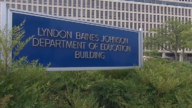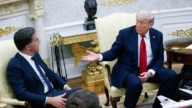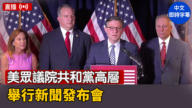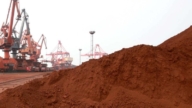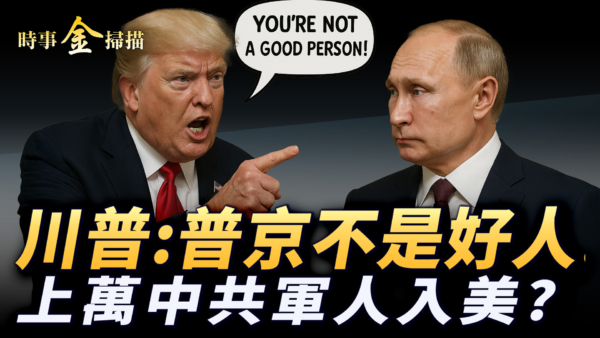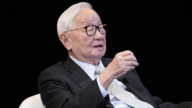【新唐人2011年6月8日讯】最近,南中国海主权争端持续升高,菲律宾政府向北京当局提出抗议,越南外交部放出将军事介入的狠话,北京官方媒体则说:“中国的克制不可能是没有限度的。”台湾将海军陆战队派驻南沙离岛。美国国防部长盖茨6月4号警告,南海领土争议可能引爆冲突。
越南外交部近日高调召开记者会,指责3艘中国海监巡逻船5月26号在南海,干扰越南油气测量船勘探,割断测量船的海底电缆,声言越南海军将动用一切必要手段捍卫领土完整。
北京方面回应说,越方在中国管辖海域作业,违背了两国就南海问题达成的共识,敦促越南停止制造事端。而越南传媒又传出,越南4艘渔船5月27号在南海遭3艘中国船只开枪恐吓。
6月5号,越南几百名示威者在首都河内中国大使馆前集会,抗议中方在南海侵犯越南主权。这样的示威活动在这个共产党专制国家是很罕见的。
另一方面,6月1号,菲律宾外交部召见中国大使馆代办,抗议中方在南沙群岛建立哨所、设钻油台。中方回应说,这些活动是在中国领海进行的。
菲律宾当局指出,中国船舰或飞机最近侵入南沙群岛海域6、7次,包括3月2号中国巡逻艇骚扰菲律宾探油船﹔2月25号,一艘中国战舰在南海向菲律宾渔船开火。
4月5号,菲律宾抗议联合国把中国主张南海主权的“九虚线版图”列为文件。随后,中方向联合国递交照会,反指菲律宾入侵中国岛礁。
台湾外交部4月18号召见菲律宾驻台代表,再度强调南海诸岛及其周边水域是中华民国固有的领土。台湾控制着南沙群岛中的最大岛太平岛,台湾4月底调派海军陆战队驻防太平岛。
去年,中国宣布南海主权为“核心利益”。之后,美国国务卿希拉里表示,解决南中国海水域和岛屿争端,关乎美国国家利益。
台湾政治大学国际关系中心研究员严震生认为,美国自去年以来所采取的亚太战略调整,使东盟国家敢于在南中国海问题上采取更为主动、而且是有可能冒犯中国的措施。
严震生(台湾政治大学国际关系中心研究员):“美国愿意跟越南有一个比较进一步的发展。美国在去年对中国整个政治、经济、军事力量崛起之后,美国似乎回到了既交往、但是又希望能够围堵中国。”
第十届“亚太安全事务会议”6月3到5号在新加坡召开。美国国防部长盖茨在会上表示,美军将扩大在亚太地区的军事介入,将东南亚和印度洋纳入美军活动的范围。
盖茨警告说,南海问题正在复杂化,除非有关各国采纳和平解决争端的机制,否则南海领土争议可能引爆冲突,而这种冲突对任何人都没有好处。
中共国防部长梁光烈5号在会上表示,中国与东盟各国在2002年签署了《南海各方行为宣言》,确认通过双边谈判和平解决争议。他呼吁各国不要“人为制造敌人”。
而就在梁光烈讲话的当天,越南和菲律宾都宣布了采购军备和舰艇,为加强在南海的军力部署。
澳大利亚格里菲斯大学亚洲问题资深讲师王一鸣博士:“因为社会制度和意识形态的不同来猜测对方的意图,这样很不自觉的各方都陷入一种互相的戒备,甚至发生军备竞赛这种事态,这就是各方都不愿意看到的一种局势。”
由于南中国海是重要的运输航道、蕴藏丰富的石油和天然气,有争议的各国海上冲突、撞船开火频频发生,中国和越南于1974年和1988年爆发海战,中国与菲律宾也于1995年因美济礁事件爆发海战。
据史料记载,大唐贞元五年,南海诸岛就划归琼州督府管辖,自唐宋元明清以来一直列入中国版图。1939年,日本侵占了南海诸岛。二战结束后,中华民国1946年接管了西沙群岛和南沙群岛,并在岛上矗立主权碑。
新唐人记者李元翰、周平综合报导。
Disputes over South China Sea
A recent multinational dispute continues to escalate
over control of South China Sea.
The Philippine government protests against Beijing.
Vietnam threatens with possible military actions.
Beijing’s official media commented,
“China’s restraint cannot be unlimited.”
Taiwan will station marines at the Spratly Islands.
U.S Defense Secretary Robert Gates warned on June 4
of possible conflicts due to the territorial disputes.
Vietnamese Ministry of Foreign Affairs recently
on a press conference accused 3 Chinese patrol boats
of interfering with its South Sea gas exploration,
and claimed its navy would use all necessary means
to defend Vietnam’s territorial integrity.
Beijing said the Vietnamese vessels were operating
in Chinese waters and violating their agreements.
It urged Vietnam to stop causing troubles.
Vietnamese media then claimed that 4 fishing boats
were threatened with gun shots by Chinese boats.
On June 5, hundreds of demonstrators gathered at
the Chinese embassy in Hanoi, protesting against
China’s violation of Vietnam’s territorial sovereignty.
Such protests are rare in this communist country.
On June 1, Philippine Foreign Ministry protested
against Beijing’s building of military outputs and
oil rigs on the disputed Spratly Islands.
Beijing claimed the operations to be in China’s waters.
Philippine authorities said Chinese ships and planes
entered Philippine waters near Spratly Islands
6 to 7 times recently, including a Chinese war ship
firing on Philippine fishing boats on Feb. 25.
On April 5, the Philippines protested against UN for
including China’s South China Sea map in official files.
China then submitted a request to the UN,
accusing Philippines of invading Chinese islands.
Taiwanese Foreign Ministry stressed on April 18
to the Philippine Rep in Taiwan, that the islands and
surrounding waters in South China Sea are Taiwan’s.
Taiwan has control over the largest Taiping Island
and has stationed marines on this island since April.
In 2010, China called its South China Sea sovereignty
its “core interests”. U.S Secretary of States Clinton
said resolving territorial disputes affects U.S. interests.
Researcher at Taiwan National Chengchi University
Yan Zhensheng believes that the U.S.’s 2010 change
of its Asian strategy emboldened other countries,
who take more proactive measures against China.
Yan: U.S wants to develop relationship with Vietnam.
As China’s political, financial and military powers rose,
the U.S would like to have exchanges with Beijing,
yet at the same time wants to contain China.
On the 10th Asia-Pacific Security Conference held
from June 3 to 5 in Singapore, U.S. Defense Secretary
Robert Gates said the U.S. would expand its military
engagement in Asia-Pacific to include Southeast Asia.
Gates warned that the South China Sea issue was
getting complicated. Unless each country adopts
mechanisms for peaceful settlement,
conflicts could arise, which would not benefit anyone.
Chinese Defense Minister Liang Guanglie said,
China and other ASEAN countries signed in 2002
a declaration to use negotiations to settle disputes.
He called on other countries to “not make enemies.”
On the same day, both Vietnam and the Philippines
announced arms purchases to strength
their military deployment in South China Sea.
Senior lecturer Dr. Wang Yiming at Griffith University:
Due to differences in social systems and ideologies,
everyone is trying to guess one another’s intentions.
This resulted in everyone guarding against others.
They even started to compete in military arms races.
No party wants to see this kind of situation.
South China Sea is an important transportation route
and also rich in oil and gas. This led to frequent
maritime conflicts, ship collisions and open fires.
China and Vietnam had naval battles in 1974 and 1988;
China also fought with the Philippines in 1995.
As per historical records, during Tang, Song and Ming
Dynasties, Spratly Islands always belonged to China.
In 1939, Japan invaded the South China See Islands.
After WWII, Taiwan took over control of
the Spratly Islands and Paracel Islands.
NTD reporters Li Yuanhan and Zhou Ping






